

What's New

Words of Wisdom
52
cards and 15 activities to spark conversations and make sense of learning.
Learn more HERE.
What We Do
The Firefly Group helps people make sense of what they learn and experience.
Whether facilitating a group for better decision-making, keynoting a conference, leading a training, or writing an instructional design, we use novel methods that engage, spark creativity, and produce memorable results.
 If
this sounds like a good direction for your organization, let's talk about
how we might collaborate! Please give me a call (802.257.7247) or send an
. - Brian
If
this sounds like a good direction for your organization, let's talk about
how we might collaborate! Please give me a call (802.257.7247) or send an
. - Brian
 Your ETR (Estimated Time to Read): 10 minutes Your ETII (Estimated Time to Implement Ideas): 5 weeks |
What
can you teach with a glass of water and an index card?
Watch my video and find out!
April
2017
|
Say
It Quick |
Discoveries bits of serendipity to inspire and motivate |
Ideas fuel for your own continuous learning |
Activities tips and tricks you can try today |
|
Empowerment Dance - a delicate relationship for mentors and protégés |
The Leader Who is Hardly Known - counterintuitive leadership |
How Empowerment Works - the conditions for sharing control |
The Invisible Card - a trick to model the empowerment process |
The
Leader Who is Hardly Known
The right kind of leadership is critical to foster empowerment in a learning
organization. But what if people don't want to be empowered? To learn about
the conditions that must be in place to make empowerment successful begin
with the 99-Word Story that opens this issue of the Firefly News Flash.
Empowerment Dance
Linda was a great boss. More like a coach than a supervisor, she helped me strive for my potential and offered me opportunities to learn and grow professionally and personally. Acutely aware of power differences, she didn't discriminate between me and her office assistant, Isabel.One day, Isabel confided, "Linda's always trying to get me to go to these fancy retreats but I just want to stay here and type."
Wow! You can offer to empower, but people have to be ready and want to make changes for themselves. It's a complex dance. Who leads; who follows?
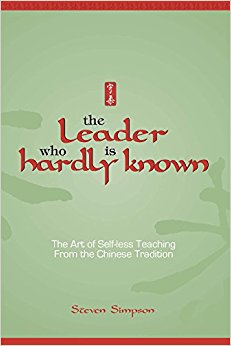 The
Leader Who is Hardly Known
The
Leader Who is Hardly Known
Self-less teaching from the Chinese tradition
This book has sat on my "to read" shelf for several years. I'm not sure why it has taken me so long to pick it up. Perhaps I thought I knew what it would tell me. Perhaps other books were more important.
Perhaps I thought I was already "hardly known" and needed to focus on becoming better known as a consultant!
No doubt you would find your own reasons not to read this book. Its very title is counterintuitive. But if you are a leader, trainer, teacher, facilitator, manager, coach, mentor, or parent, you should.
Written by Steven Simpson, one of the creators of Chiji Processing Cards (See the Firefly News Flash for April 2010), The Leader Who is Hardly Known is an exploration of the role of leaders who wish to focus on personal growth, learning, and developing people. Simpson draws from years of experience as an outdoor educator. Readers unfamiliar with ropes courses, camping, and hiking will find themselves transposing some of Simpson's ideas to their own context.
But Simpson's basic concept is that the philosophy of the Tao provides a helpful metaphor for the ways a leader can help others grow. Concepts like humility, tolerance, patience, steadiness, and correct timing are discussed through examples and fables. Simpson makes clear that one of the most helpful things a leader can do is set up the environment, ensure safety, and step back allowing people to discover their own learning.
This is a style of leadership that puts faith in followers. It assumes people want to learn and grow; to be productive and make a difference. So it meets people where they are, gives them a challenge that is just right, and includes them in the evaluation of results. In the end, people become empowered and when that happens, the leader is hardly known.
More Information:
The Leader Who is Hardly Known by Steven Simpson, Ph.D., Wood 'N' Barns Publishing and Distribution, Oklahoma City, © 2003, ISBN # 1-885473-51-6.
How Empowerment
Works 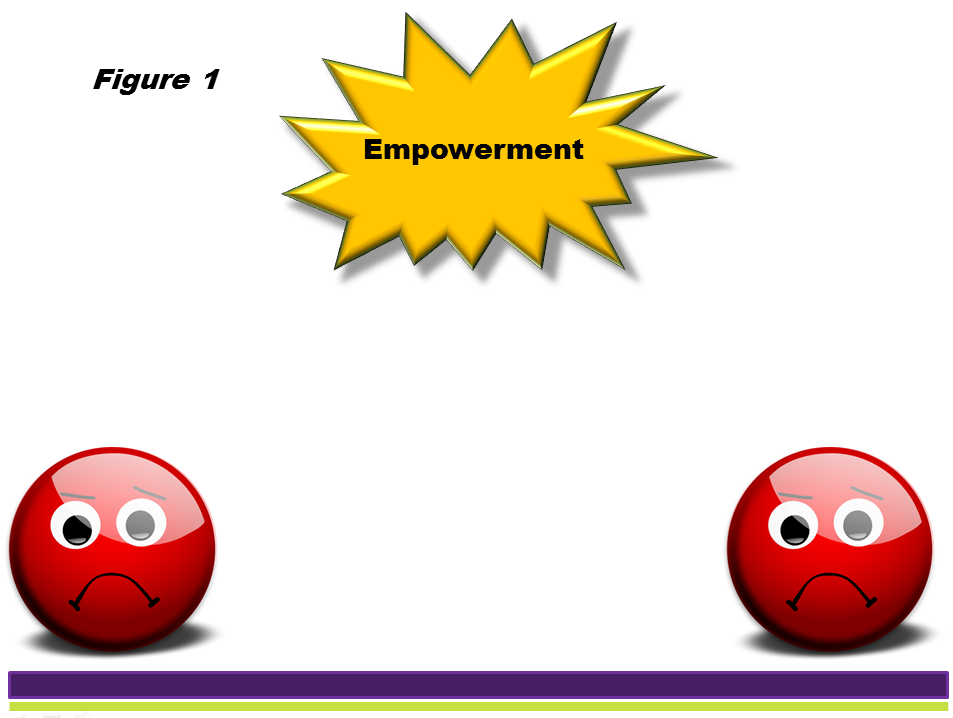
By its definition, empowerment is something that happens within an individual.
You can't make it happen for someone else. That being the case, how can managers
empower their teams? How can leaders empower people in their organization?
Like the 99-Word Story, some people only need a little encouragement to take
steps toward growth. Others are just not "there yet." They are content to
stay as they are. Push them too much and you risk being paternalistic while
they become resentful (Figure 1).
In my experience, whether we call it empowerment, self-determination, education, or something else, several factors need to be in place before the empowerment dance can begin.
Both the person
with power and the person becoming empowered need to be aware of two things.
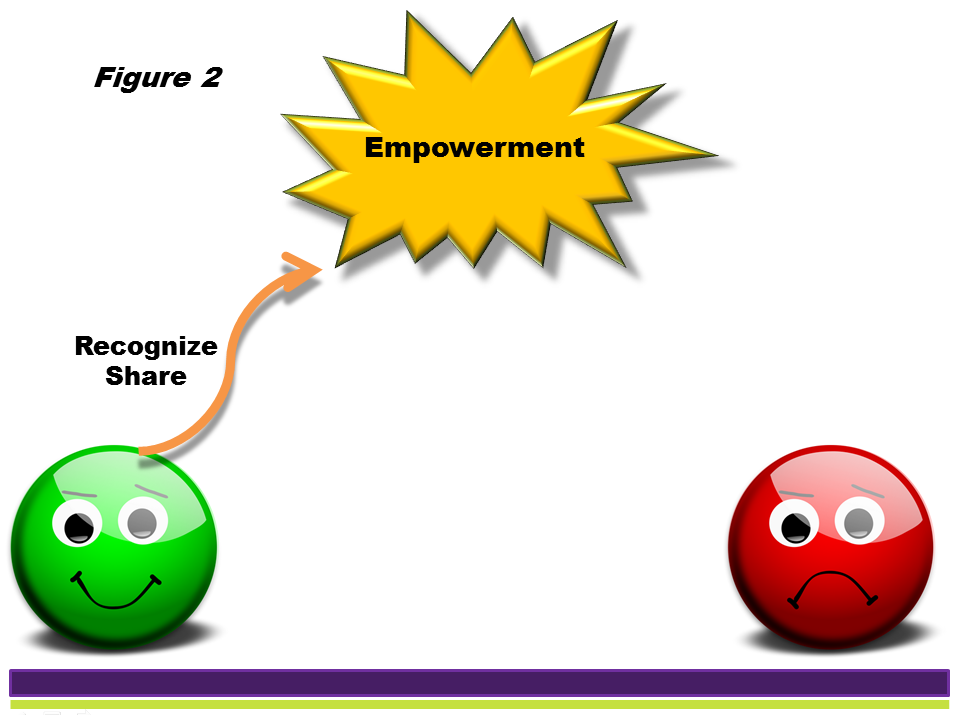
The person with more power has to recognize there is an imbalance of authority and influence. Not only that, but this person needs to be willing to do something about that imbalance. The person must be ready to share some of their influence (Figure 2). They must be ready to give away information, resources, contacts, and anything else that will help create an empowerment-rich environment.
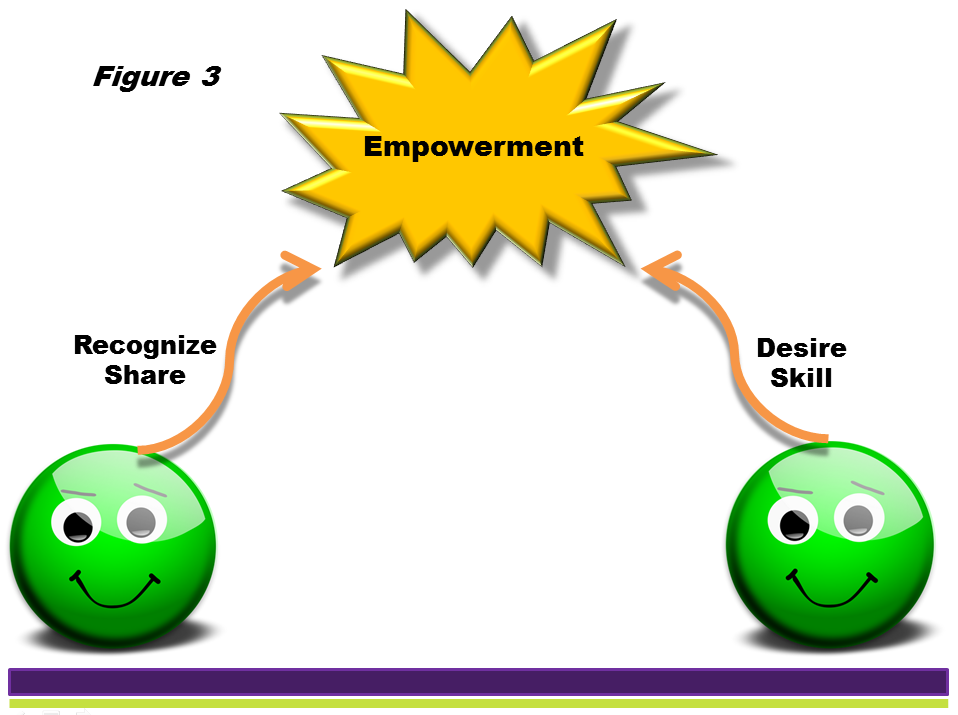
But, like Isabel in our 99-Word Story, it's no use giving something to someone who doesn't want it. So, the person who is becoming empowered must have the desire to grow and also have the skill to accept more responsibility (Figure 3). They have to be realistic about how much authority they are able to handle.
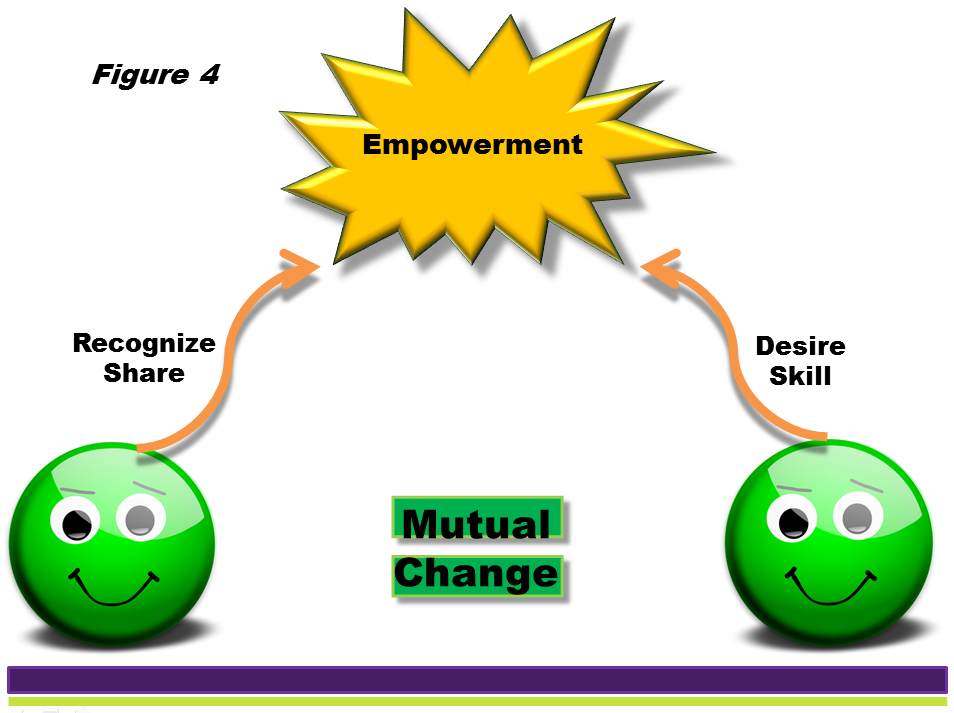
As the dance progresses, those with authority will become more adept at sharing responsibility in positive ways. Those who are growing in authority will become more articulate in identifying what they need. Eventually, we begin to see that everyone has grown and that the result of the dance is mutual change in unexpected ways (Figure 4).
The Invisible
Card
One of my favorite ways to practice becoming a leader who is hardly known
is to become proficient in performing the Invisible Card trick. This trick
can also be used as a metaphor to start a conversation about empowerment and
mutual change. The
trick is unusual in that it uses an imaginary deck of cards yet the effect
is dramatic.
In summary, I ask you to think of an ordinary deck of 52 cards. I ask you a series of questions that require you to choose a smaller and smaller subset of the deck. Eventually we are left with one card which happens to be the exact card that was hidden in the room ahead of time.
You can download a script and explanation of the trick HERE. Review it and practice it then try it with friends.
To get a sense of how the trick works, play with the simulation I have devised HERE. Try playing it several times and notice how as facilitator, I manage to help both of us reach the same conclusion.
After you've played with this simulated card trick, ask yourself some of the questions below:
Ideas to Consider:
- How does this trick demonstrate the dance of empowerment?
- How would you describe the role of the facilitator in this card trick?
- This trick only works when the facilitator keeps clear sight of the goal - getting to the target card. How is this like being a leader in your work setting?
- One person said this is just an example of manipulating someone for your own purposes. How would you respond to this person?
When you try the invisible card trick with your team or at your next dinner party, please !
|
Whether you need a keynote speaker, or help with strategic planning, performance improvement, or training facilitators and trainers in your organization, I look forward to your call (802.380.4360) or . -- Brian |
Read previous
issues. Click Library!
To add or delete your name to our mailing list, email
with a short note in the subject line.
I want this newsletter to be practical, succinct, and thoughtful. If you have suggestions about how I can meet these criteria, please let me know! Send me an with your thoughts and ideas.
Home
| Services | Products
| Mission | Ideas
| The Group | The
Buzz
(c)
2017 The Firefly Group